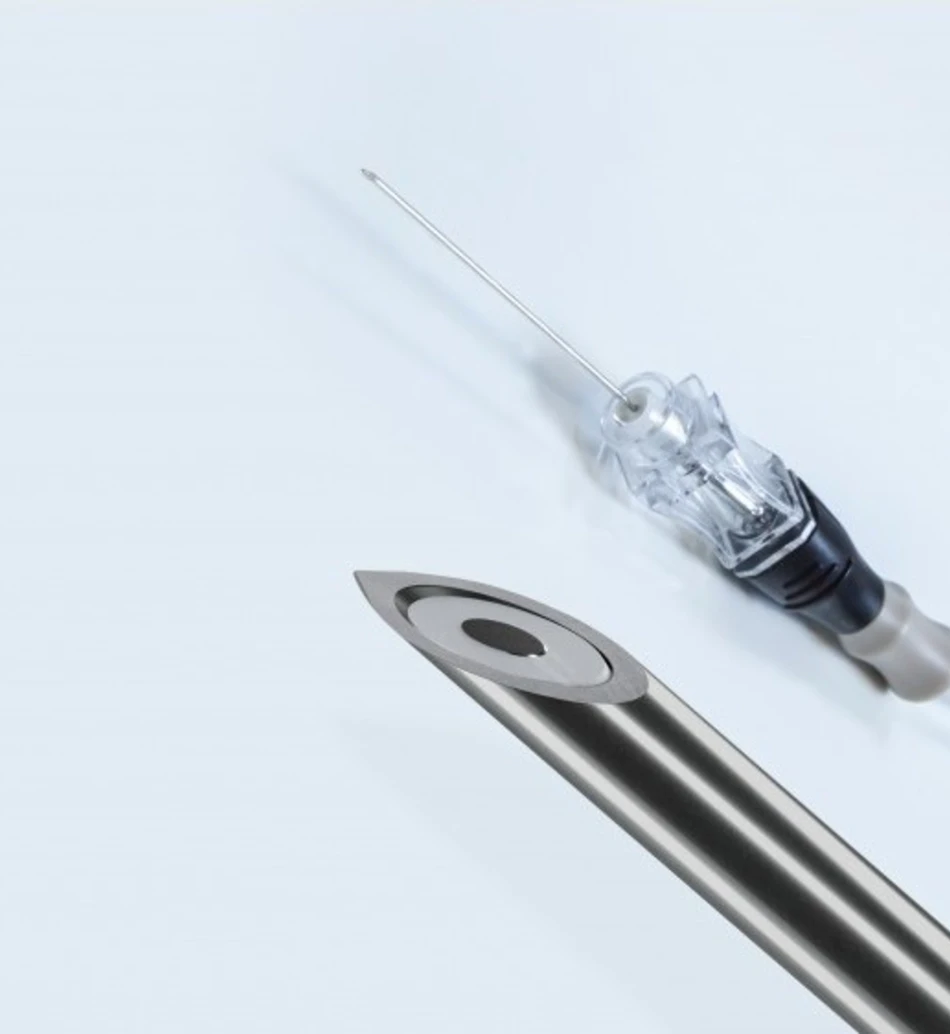The smart needle that "sees" what doctors can't

It looks like an ordinary needle, yet it knows precisely what body tissue it is passing through as it punctures.
Finnish start-up Injeq’s IQ-Needle will save time and costs, while improving safety and comfort for patients.
A child with leukaemia receives approximately 20 lumbar punctures during a typical course of treatment. While these punctures are necessary, everyone of them poses a risk.
Currently, lumbar punctures are performed blind – the clinician must go “by the feel of it” to know when the needle has reached the cerebrospinal fluid (CSF) and should not be inserted further. Punctures often fail and must be re-attempted, especially with the tiniest patients. About one in five causes tissue damage that can impact outcomes for children with leukaemia.
“When physicians perform lumbar punctures for leukaemia patients, they go very slowly and carefully. They frequently take out the stylet to check where they are, which raises infection potential, explains Injeq CEO Rami Lehtinen. Worse, if you go too deep, you can introduce blood into the spinal fluid. Since leukaemia is a blood cancer, there is a risk of spreading it into the central nervous system. Our IQ-Needle makes punctures easier and more accurate, greatly reducing these risks.”
The Injeq IQ-Needle system is comprised of a single-use IQ-Tip Spinal Needle and an Injeq 301 Analyzer. They are connected by a LEMO- Northwire connector-cable harness – which was selected because it is robust enough to be autoclaved frequently throughout its life cycle.
The Injeq IQ-Tip contains a probe stylet that tells what kind of tissue the tip of the needle is touching in real time. It does this by measuring bioimpedance – the level of resistance to an electric current – which is unique for every tissue type. As the puncture is being performed, the INJEQ 301 Analyzer takes measurements 200 times per second at 15 frequencies. There is an alert tone when the needle has reached the CSF.
With Injeq technology complementing the physician’s skill, punctures are safer, faster and cause less discomfort – all of which support better patient outcomes and healthcare cost savings.

“Our system makes punctures easier and more accurate.”
Rami Lehtinen, Injeq CEO
The Injeq 301 tissue analyser identifies the tissue at the tip of the Injeq IQ-Tip needle in real time. The device is connected with a REDEL SP connector and a Northwire cable.
Injeq’s is a classic start-up story, beginning with the recognition of a need. In the early 2000s, three researchers in Tampere, Finland thought, “if only we could make demanding punctures safer…” Over the years, they kept the vision alive and Injeq was founded in 2010. Work began in earnest towards a commercially viable smart needle.
“We’ve been doing clinical trials in Finland for about two years, says Rami Lehtinen. We are now expanding to a multicenter study including every Finnish university hospital and three other university hospitals in Nordic countries.”
The company expects to receive CE certification during 2018 and launch commercially in Europe. Next steps will include another funding round to launch beyond Europe. Injeq will first market the smart needle for pediatric leukaemia and neonatal ICU patients, then for adults and spinal anaesthesia. Numerous other applications of Injeq technology, such as biopsies and drug delivery, will follow.
“Whatever type of demanding puncture you do, you like to know where the tip of the needle is, says Rami Lehtinen. We selected the spinal needle for the first application because there is great immediate benefit to patients and because there is nothing like this out there.”


